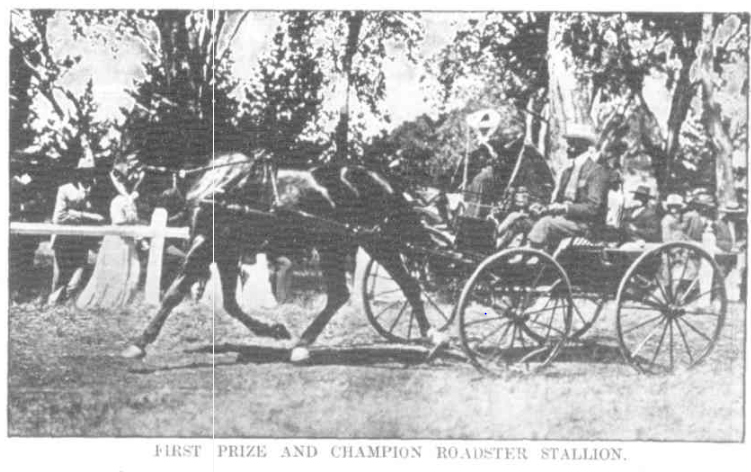The Roadster
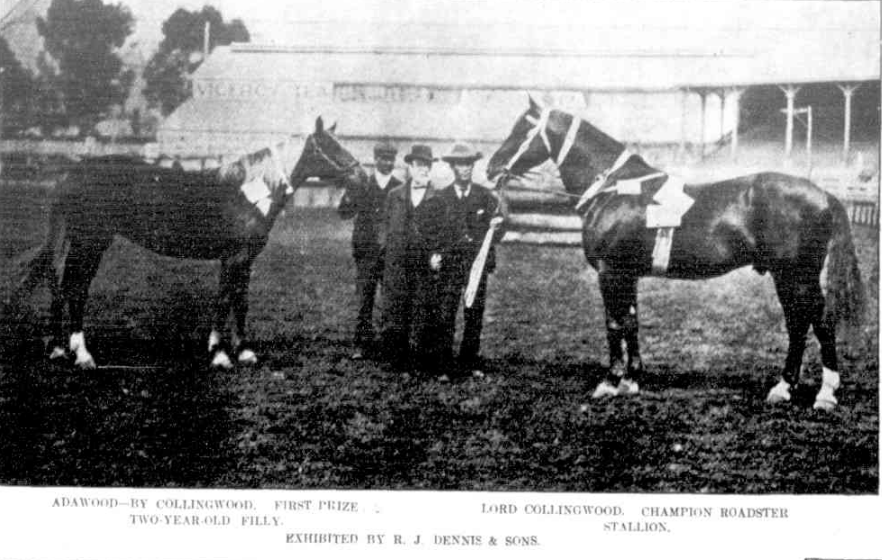
Background Breeds
Janet Lane on Waler Data Base @ Facebook. Image: Observer, Adelaide, 22nd September, 1906.
Old newspaper photos, despite the quality, provide a pictorial guide to this founding breed of the Waler.
A strongly built horse; good bone, upright neck carriage, excellent ground-covering action that was not low, and importantly, ‘look at me’ presence.
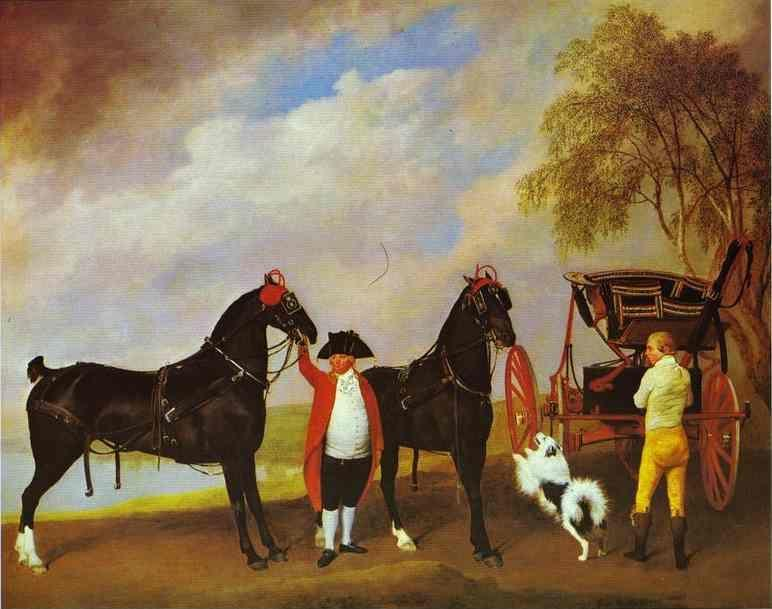
No studbook was ever formed for the Roadster hence they’re extinct, however were important founders of the Thoroughbred (Shales, Norfolk Phenomenon, Bellfounder lines, etc), Standardbred, Hackney, Coach-horse (Yorkshire Coach Horses are now extinct too), and many believe Justin Morgan was a Roadster. An important ancestor of the Waler; the most alike in looks.
Image: The Prince of Wales’s Phaeton. George Stubbs, painted 1793
Roadsters were the type of horse for a gentleman. The Prince of Wales also famously drove behind three, in tandem (a randem), from London to Bath, setting a speed record.
Roadsters were bred from the old heavy horses of England lightened up a little with eastern blood, and refined for fast trotting action in the days road racing was a sport (although banned, if at the trot there was no rule against it) , and no-one could go over a trot in cities. Farmers horses hence became roadsters – the Norfolk Trotter, also called the Norfolk Roadster, the Lincolnshire Trotter/Roadster. They raced to market. Soon young bloods wanted these speedsters. Iron feet and legs. Some had hooves so hard they could not be shod, as no nail could be driven in – the nail bent. I (Janet) had a Waler mare like that. Several farriers tried, as well as myself. Many Roadsters were entered into the TB studbook here. While some were pony or galloway size, most were about the 15.2 – 16.2hh height.

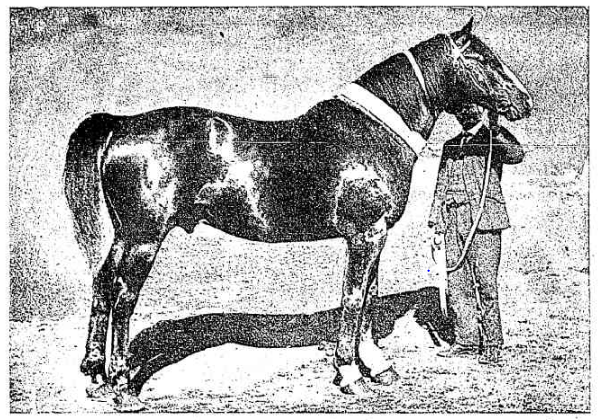
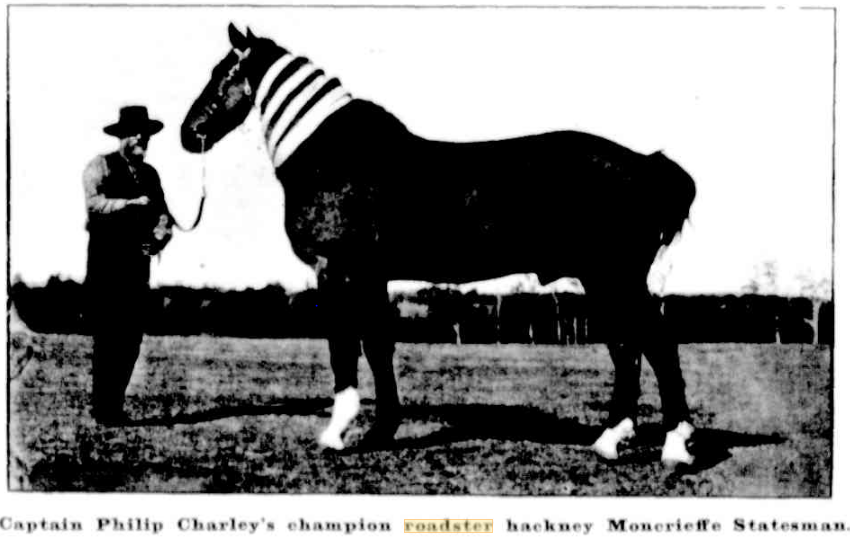
Images: J.T. Bell’s champion Roadster mare Elsie. Leader, Melbourne, 4th October, 1913; Mr W. H. Michael’s champion Roadster stallion, Message. Leader, Melbourne, 12th September 1908; Australian Town and Country Journal. Wednesday 3rd April, 1907
A man was judged on his horseflesh – he wanted the best. The horse of the Regency buck – Roadsters could get along both in style and fast – covering a lot of ground with incredible stamina and never stumbling. Also pulling big weights when needed, being bred originally from the strong farmers horses used to pull loads to market. Most were bay or black, but chestnut and roan was occasionally seen in Norfolk descended roadsters.
At shows there could be confusion – a Roadster such as the stallion Shirley Free Lance (imp.) being entered in several classes – Pony, Hackney, and Roadster. Others were entered as Hackney, Roadster, Trotter, Saddlebred and Coach-horse. Most Roadsters here were of imported English origin, however a few were bred from imported American trotters (their founding Bellfounder lines in fact are Roadster). Sometimes, the term Roadster was applied to known breeds such as Hackneys, to add to confusion. Eventually, like all breeds without a studbook, they disappeared, basically becoming the lighter Hackney (breed organisation formed 1883) with higher, more extravagant, hence slower, action. The term Hackney-Roadster here by the early twentieth century, spelled the change over.
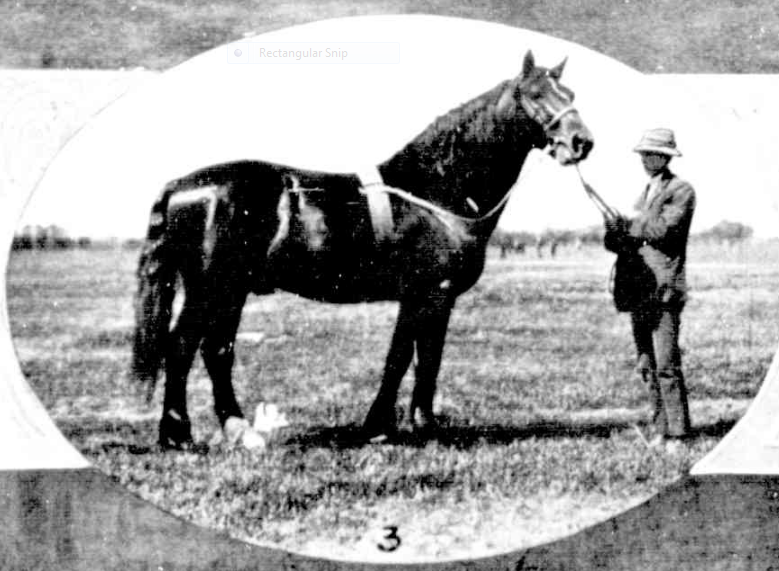
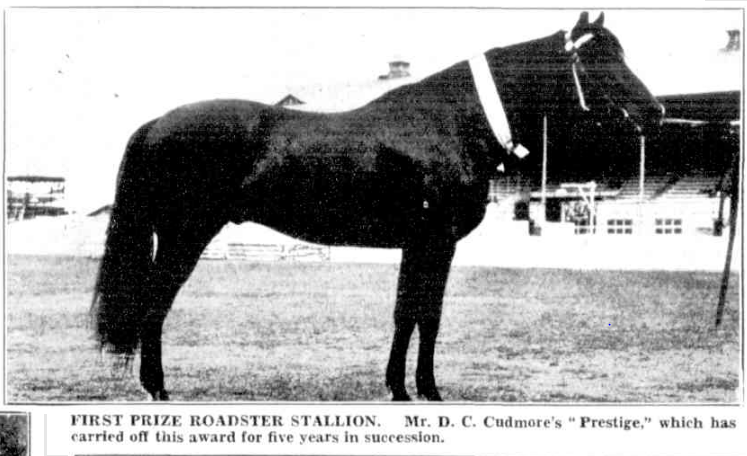
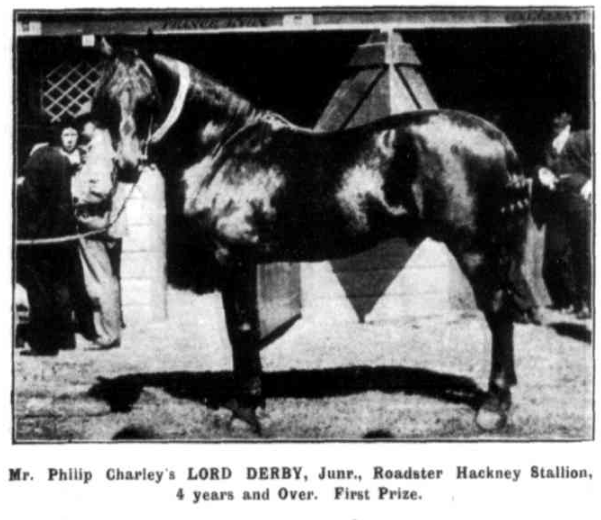
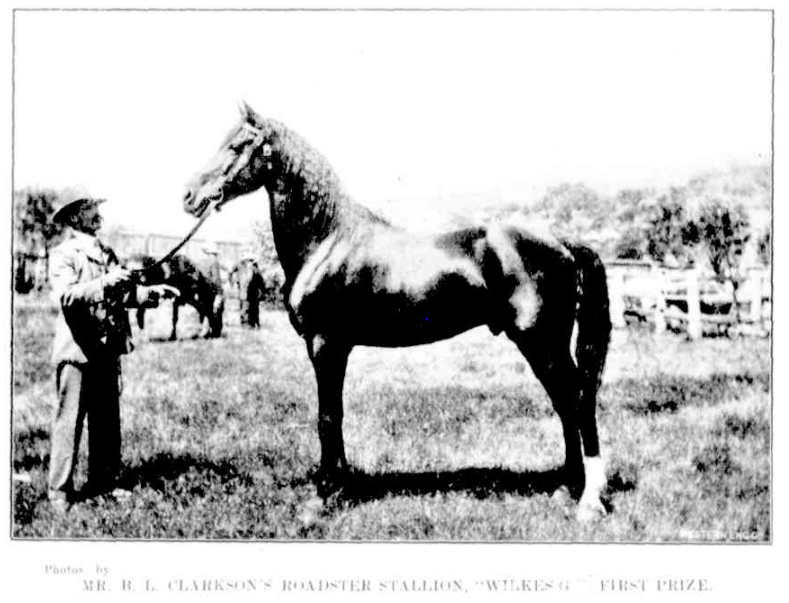
Many stations bought them over the decades for breeding Walers for export. No leading horse trade breeder would be without a Roadster stallion.
The word Roadster carried on – applied to speedy, stylish, sporting automobiles right up to the present. Tremendous horses. Handsome, noble, brave, tough.
